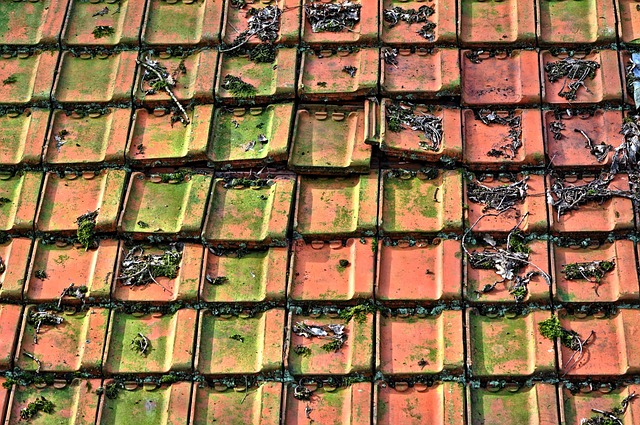Green and living roofs, or rooftop gardens, are an emerging trend in eco-conscious building design. They offer multiple benefits such as insulation, reduced energy costs, and natural buffers against extreme weather events. These sustainable solutions promote biodiversity, urban greening, and improved air quality. Installation involves assessing the roof, applying a waterproof membrane, installing drainage layers, and selecting eco-friendly plant species. Regular maintenance ensures longevity and environmental benefits, while choosing sustainable materials like lightweight growing mediums and drought-resistant plants contributes to energy savings and a healthier environment. Proper care transforms these roofs into vibrant ecosystems, offering aesthetically pleasing views and environmentally friendly urban spaces.
Discover the transformative power of expert rooftop garden installations. This comprehensive guide explores the thriving world of green roofs and their profound environmental benefits. From understanding the fundamentals of living roofs to mastering the step-by-step installation process, we delve into creating sustainable oasis in urban spaces. Learn how to choose ideal materials and maintain your eco-friendly roof garden, contributing to greener cities while enjoying a serene natural retreat above your head. Embrace the future of roofing with energy-saving, environmental solutions that harmonize nature and urban living.
- Understanding Green Roofs and Their Benefits
- The Installation Process: Step-by-Step Guide
- Choosing the Right Materials for Your Rooftop Garden
- Maintaining and Caring for Your Sustainable Roof System
Understanding Green Roofs and Their Benefits
Green roofs, also known as living roofs or rooftop gardens, are gaining popularity as an innovative and eco-friendly roofing solution. This sustainable roof system integrates vegetation into the structural design, offering a range of benefits for both the building and the environment. By incorporating plants, green roofs provide insulation, reducing energy costs associated with heating and cooling. They also act as natural buffers against extreme weather conditions, absorbing rainwater and helping to manage stormwater runoff.
The environmental advantages don’t stop there. Green roofing technology promotes biodiversity by creating habitats for various species of birds, insects, and other wildlife. Additionally, these roofs contribute to urban greening, enhancing the overall quality of life in urban areas. With proper maintenance, a green roof can thrive, transforming a standard rooftop into a vibrant ecosystem while also providing aesthetically pleasing views and improving air quality.
The Installation Process: Step-by-Step Guide
The expert installation of a rooftop garden involves several crucial steps to ensure its structural integrity and aesthetic appeal. It begins with an assessment of the existing roof, including inspecting for any damage or weaknesses that could compromise the new sustainable roof system. Next, a waterproof membrane is meticulously applied, creating a protective barrier against the elements. This is followed by the installation of drainage layers and a growing medium, which facilitates water management while providing a healthy environment for plant growth.
The heart of the process lies in carefully selecting and planting suitable vegetation. Experts choose species that thrive in urban settings, contributing to an eco-friendly roof garden. These plants not only enhance the beauty of the space but also provide insulation, reduce noise pollution, and absorb carbon dioxide, making them a vital component of green roofing technology. Finally, the garden is nurtured through regular maintenance, ensuring its longevity as an energy-saving roof system that benefits both the building and the environment.
Choosing the Right Materials for Your Rooftop Garden
When designing and installing a rooftop garden, selecting the appropriate materials is paramount to ensure its longevity and environmental benefits. A green or living roof, as they are often called, offers an eco-friendly alternative to traditional roofing while providing insulation, reducing energy costs, and even extending the life of your roof. The right materials can transform your urban space into a vibrant oasis that not only enhances aesthetics but also contributes to sustainable practices.
Opting for a sustainable roof system involves choosing components like lightweight growing mediums, drought-resistant plants, and water-efficient irrigation systems. Modern green roofing technology provides a range of options, from extensive systems with low soil depth suitable for various vegetation types to intensive systems supporting heavier plants and even small trees. These materials not only facilitate the growth of lush greenery but also create an insulating barrier, reducing the need for heating and cooling in buildings. By incorporating these eco-friendly roof garden elements, you contribute to a healthier environment while enjoying the benefits of urban green roofs.
Maintaining and Caring for Your Sustainable Roof System
Maintaining and caring for your sustainable roof system is a vital part of ensuring its longevity and environmental benefits. A green roof or living roof, as they’re often called, requires regular attention to thrive. This includes routine inspections to check for any damage, especially during severe weather conditions, as these structures can be particularly vulnerable. The right maintenance schedule will involve tasks such as removing debris, inspecting drainage systems to ensure water flows freely and not pooling, and replacing any worn-out components.
Using eco-friendly practices is key when caring for your rooftop garden. This includes using organic fertilizers and pest control methods to avoid harmful chemicals that could impact local wildlife or the surrounding environment. Regular watering is essential, particularly during dry spells, but be mindful of overwatering which can lead to root rot. Many green roofing technologies now incorporate smart irrigation systems that monitor moisture levels, ensuring your roof garden receives the perfect amount of water. These systems are just one example of how modern solutions enhance the sustainability of urban green roofs, contributing to energy-saving and creating a harmonious environment in bustling cities.
The journey towards creating a vibrant and sustainable rooftop garden begins with understanding its profound benefits for both the environment and your space. By following a meticulous installation process, selecting the right materials, and adopting proper care practices, you can transform your urban sanctuary into an eco-friendly haven. Embrace green roofing technology to not only reduce your carbon footprint but also enhance your building’s energy efficiency. Whether you’re aiming for an urban green roof or a lush living roof, expert installation ensures a robust sustainable roof system that stands the test of time.
